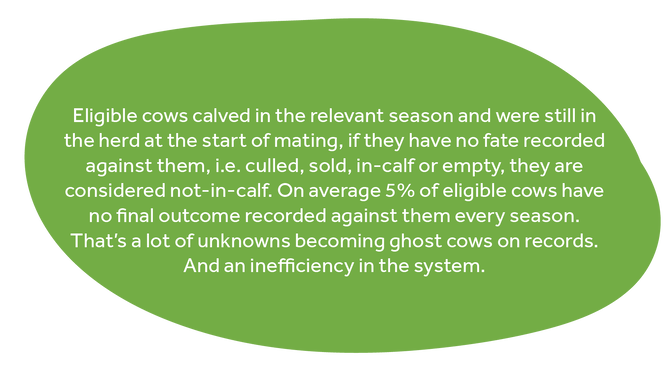Just as they do after every All Black’s game, we should analyse results and identify opportunities. Pregnancy testing offers an opportune time to assess reproductive performance and herd management.
Sometimes scanning feels like groundhog day, holding our breath waiting to hear whether she is in calf or not, and feeling more and more deflated with each “empty” result. Once you have your results it is the perfect time to do some analysis to uncover what went well and where the opportunities are, to avoid that feeling next season. But where do we start?
Assess current performance and compare it to last year
Start in the WelFarm portal, check your reproductive metrics on the dashboard. This will show you where you sit in comparison to other farmers in the region and across the country. There is also some comparative reporting that puts seasons side by side while comparing your numbers to the benchmarks.
Next grab your DairyNZ InCalf Fertility Focus Report. If you have entered early-aged pregnancy testing results you will get a detailed report which gives the best information. But an intermediate report that is generated from non-aged pregnancy testing can still provide good insight. Remember, reports are only as good as the data behind them.
Identify opportunities for improvement
Where did your 6-week in-calf rate land? What is your not-in-calf rate like? This is relative to the length of mating, as is the performance after six weeks metric.
Yes, your not-in-calf rate percentage is different to the empty rate you were given after scanning, because they are two different measures. Your empty rate is the cows that were confirmed empty at scanning, so a portion of the cows that were scanned. Where the not-in-calf rate considers all the cows that were eligible to get pregnant this season and represents every cow not confirmed as in-calf.
Flip over your report and there is a breakdown explaining what cows are contributing to your not-in-calf rate. If you have cows you actively chose not to mate since they were going to be culled, work out what percentage of the herd that was - is it really going to have much impact?
If you are worried though, in the future you can either cull them off the records before mating starts or when they cycle record a natural mating against them. And always remove cows promptly from your records throughout the season, then the Fertility Focus Report can make an estimation the likelihood they were in-calf or not when they were removed.
Building the picture
The graph on detailed reports gives a great overview of how the herd got in calf during mating, what is the gap from the target line? Are there any dips or sudden drops? And look at the submission rate, conception rate and heat detection efficiency together. These can give great clues around heat detection performance, nobody wants to be told they are not good at detecting cows but there is no such thing as perfect. What could you be doing to improve your chances of achieving a good result?
Use the report with other tools you have available, MINDA and myHERD offer great insight. And keep an open mind when having discussions. Gather as much as you can before you start considering solutions. Utilise your vets and rural professionals to help you understand your performance and look for opportunities to improve.



